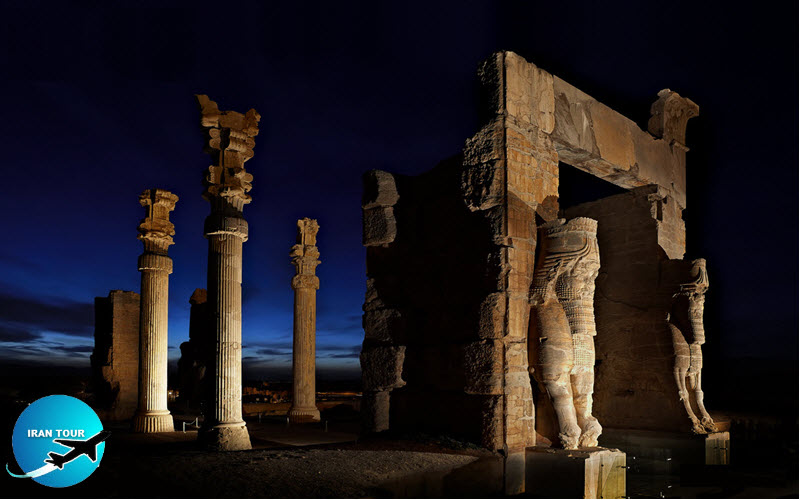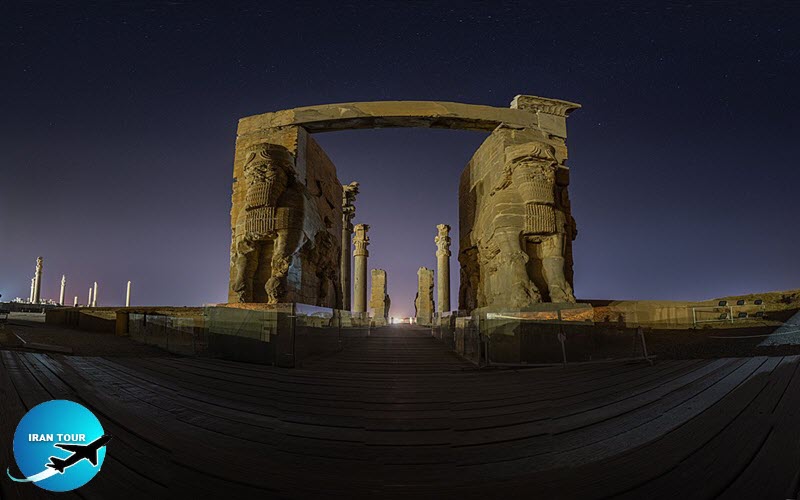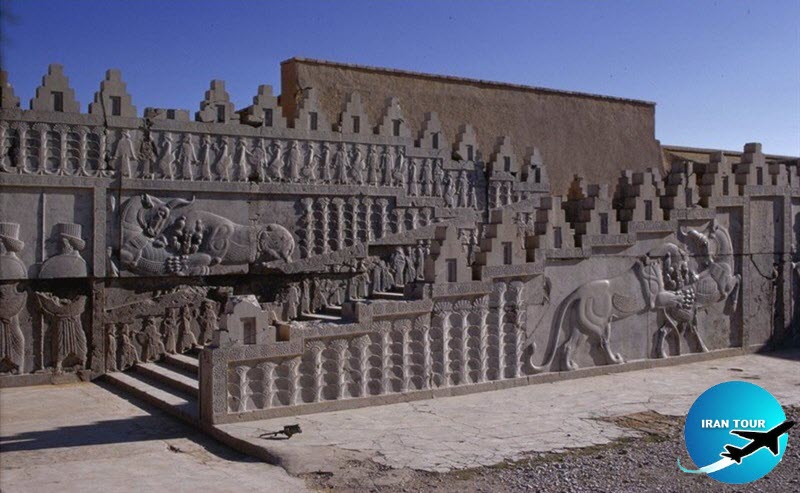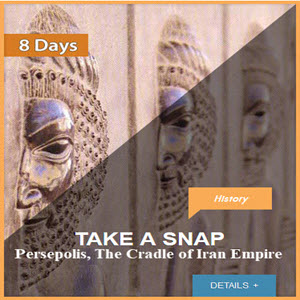Copyright 2020 - 2021 irantour.tours all right reserved
Designed by Behsazanhost
Persepolis, glory of past, a treasure of the present
Persepolis, glory of the past, a treasure of the present
Persepolis (Old Persian Pårsa, modern Takht-e Jamshid): Greek name of one of the capitals of the ancient Achaemenid empire, founded by the great king Darius (522-486 BCE). There are some indications that the site of Persepolis was already a government center under Cyrus the Great (559530) and his son Cambyses II (530-522), but there are no archaeological traces of this older phase. However this may be, it seems as if Darius invented> Persepolis as the splendid seat of the government of the Achaemenid empire and as its center for receptions and festivals.
 |
The wealth of Persia was to be visible in every aspect of its construction. Persepolis was a showcase. The first building phase may have lasted from 518 to 490. Darius> men leveled the ground and created a terrace of 450x300 meters, on which stood a large building and an audience hall. In the treasury, the booty of the conquered tribes and states and the annual tribute sent by the kings' loyal subjects on the occasion of the New Years' festival, were stored. Many people were employed to keep the gold and silver shining: from the Fortification tablets, it is known that in 467 BCE, no less than 1348 people were employed in the treasury The square audience hall, which was at the heart of the terrace, is usually called the Apadana. Its eastern stairs are famous for their representation of the people of the empire. (The decoration of the northern stairs, which is roughly similar, is of lesser quality.)
- 8000 years of history in Fars Province
 |
 |
The founding inscription reads: Darius the great king, king of kings, king of countries, son of Hystaspes, an Achaemenian, built this palace. During this first building phase, a complex system of water channels and drainage was cut into the rocky terrace. The second phase, between 490-480 consists of buildings started by Darius but completed in the first years of the reign of his son and successor, Xerxes (486-465). Actually, Persepolis is mostly the work of this king. He tells us in an inscription: When my father Darius went away from the throne, I became king on his throne by the grace of Ahuramazda. After I became king, I finished what had been done by my father, and I added other works. The Apadana was finished and a small palace was added to the south of the Apadana. It is usually called Darius> palace, although he probably did not live to see the building finished, The ancient Persian name was Taçara, winter palace). To the north of the apadana, the Gate of All Nations (also known as Xerxes> Gate) was built, which was guarded by a pair of large bulls in the west and lamassuys in the east (a lamassu is a bull with the head of a bearded man). Above this lamassus, an inscription was written:
 |
A great God is Ahuramazda, who created this earth, who created the yonder sky, who created man, who created happiness for man, who made Xerxes king, one king of many, one lord of many. I am Xerxes, the Great King, King of Kings, King of countries containing many kinds of men), King in this great earth far and wide,
 |
son of King Darius, an Achaemenian. Proclaims Xerxes the King: By the favor of Ahuramazda I built this Gateway of All Nations. I built many other beautiful things in Persia. I built them and my father built them. All the beautiful things we built, we have built in the favor of Ahuramazda. In the next decade, 480-470, Xerxes> palace was built between the treasury and the apadana. The Persian name was Hadis, dwelling places. Meanwhile, the western part of the treasury was reconstructed; this part became known as the Queens Quarters. The women lived in their own rooms, situated around a spacious courtyard. In these years, the treasury probably not big enough to store the booty of Xerxes successful wars- was enlarged to the north In the fourth phase, the Palace of Artaxerxes I and the Hall of Hundred Columns were added. It was Persepolis' second-largest building, measuring 70 x 70 meters. This throne hall was finished by Xerxes son Artaxerxes I Makrocheir (465-424). At a certain moment, its function was changed and it became a storeroom, probably because the treasury was again too small to contain everything. In about 450 BCE, the complex was more or less finished and there was probably no building activity for almost a century As we have already seen, Persepolis was taken by the Macedonian king Alexander the Great in the first weeks of 330. He destroyed several palace buildings (not all!) The first westerner to visit Persepolis: The first westerner to visit Persepolis was a missionary man from Portugal, Antoine de Gouvea, who noticed cuneiform inscriptions in 1602. Sixteen years later, the Spanish ambassador Garcias de Silva y Figueroa saw the ruins, he must have planned his stay, because he visited the place with the World History of the Greek historian Diodorus of Sicily in his hand.
 |
The first to make a real contribution to the study of the ruins and to identify them as the capital of ancient Persia was a Dutchman, Cornelis de Bruijn (1652-1727), who visited Persepolis in 1704/1705. He made many beautiful drawings, which he published in 1711 in Reizen over Moskovie, door Persie en Indie. His drawings were long considered the best representations available until the first photographers visited the place in the twentieth century. After a dig in 1878, which was organized by the Persian governor of the Shiraz region, the first archaeological research was executed by the Oriental Institute of Chicago: Ernst Herzfeld and F. Schmidt were working in Persepolis from 1931 to 1939. Ever since archaeologists of many nations have been working at Persepolis. Excavation is going on and many secrets are still sealed under the dust.
- Details
- Category: What to see in IRAN



















